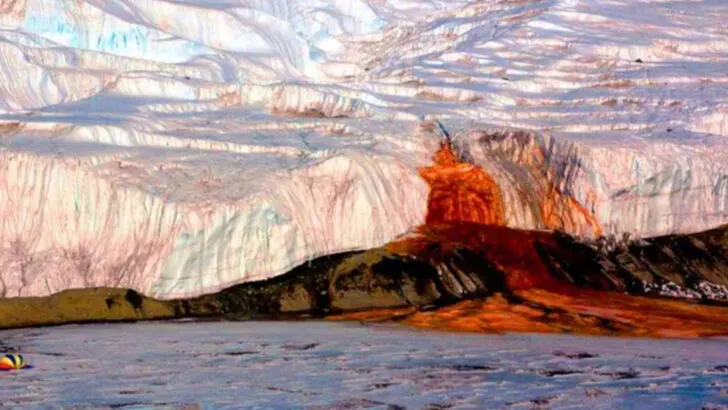Antarctica, the icy continent at the southernmost part of the Earth, remains one of the most mysterious and least understood places on our planet.
While many associate it solely with snow and cold, there’s so much more beneath its frozen surface. From its unique wildlife to its surprising history, Antarctica offers a wealth of secrets waiting to be discovered.
In this blog post, we aim to unveil 14 intriguing facts about Antarctica that most people might not be aware of, but definitely should be. Each fact provides a glimpse into the wonders of this frozen land.
Antarctica’s Unique Icefish
Antarctica hosts a peculiar resident known as the icefish. This fish is unique due to its transparent blood, an adaptation that helps it survive in icy waters. Unlike most fish, icefish lack hemoglobin, the protein that gives blood its red color. Instead, their blood is clear, allowing them to absorb oxygen directly from the water.
This extraordinary adaptation reflects the harsh environment where temperatures plunge below freezing.
Additionally, their bodies produce antifreeze proteins, preventing ice crystals from forming in their blood. As elusive inhabitants of the Southern Ocean, icefish exemplify nature’s adaptability.
The Mysterious Blood Falls
In the middle of the pristine white wilderness of Antarctica lies the Blood Falls. This eerie waterfall flows from the Taylor Glacier, stained a deep crimson hue. The red color is due to iron-rich water oxidizing upon contact with the air.
This natural phenomenon was first discovered in 1911, and scientists have since uncovered a trapped subglacial lake beneath the glacier.
The iron in the water comes from ancient microbial ecosystems that have been isolated for millennia. Blood Falls is a stunning example of how life can exist in some of the world’s most extreme environments.
Antarctica’s Subglacial Lakes
Beneath Antarctica’s thick ice lies a hidden world of over 400 subglacial lakes. Lake Vostok, the largest, is similar in size to Lake Ontario. These lakes remain liquid due to heat from the Earth’s core and insulation by the ice.
Isolated for millions of years, these lakes may harbor ancient microbial life. Scientists study them to understand life in extreme conditions.
Accessing these lakes is challenging, as contamination must be avoided. The discovery of such lakes challenges our understanding of freshwater ecosystems in such hostile environments, prompting curiosity about potential life forms.
The Antarctic Treaty System
The Antarctic Treaty System, signed in 1959, represents a significant achievement in international diplomacy. It designates Antarctica as a scientific preserve, banning military activity on the continent.
Signatories, currently numbering over 50 countries, commit to peaceful collaboration and scientific research. This treaty uniquely places global cooperation above national interests, promoting unity.
The treaty also prohibits mineral mining and nuclear testing, safeguarding Antarctica’s pristine environment. As one of the most successful international agreements, it underscores the importance of preserving this delicate ecosystem for future generations.
Antarctica’s Active Volcano: Mount Erebus
Mount Erebus, the southernmost active volcano on Earth, is a prominent feature of Antarctica’s Ross Island. Known for its persistent lava lake, Erebus stands as a beacon of geothermal activity amidst the icy expanse.
Discovered in 1841 by explorer Sir James Clark Ross, the volcano has become a site for scientific research. Its unique geology provides insights into volcanic activity under extreme conditions.
Erebus offers a stark contrast to the frigid surroundings, with its steaming vents and occasional eruptions. This fiery giant continues to intrigue volcanologists and adventurers alike.
Antarctic Krill: The Tiny Giants
Antarctic krill, though tiny, play a colossal role in the Southern Ocean’s ecosystem. These small crustaceans are a keystone species, forming the diet of many marine animals, including whales, seals, and penguins.
Krill congregate in massive swarms, sometimes visible from space, making them a vital food resource in this sparse environment. They consume phytoplankton and recycle nutrients, supporting the food web.
Despite their abundance, krill populations face threats from climate change and overfishing, prompting conservation efforts. Their presence highlights the interconnectedness of Antarctic life and its vulnerability.
Antarctica’s Dry Valleys
The Dry Valleys of Antarctica defy expectations of a frozen landscape. Located near McMurdo Sound, these valleys are among the driest places on Earth, with minimal snow or ice cover.
Shielded by surrounding mountains, they experience extreme katabatic winds that evaporate moisture. This unique climate creates a desert-like environment in the heart of the icy continent.
Despite harsh conditions, microbial life thrives here. Research conducted in the Dry Valleys offers insights into potential life on Mars, providing a terrestrial analog for extraterrestrial exploration.
The Emperor Penguins’ Resilience
Emperor penguins are the only penguin species that breed during the harsh Antarctic winter. As temperatures drop below -50°C, they huddle together to conserve warmth.
These resilient birds exhibit remarkable parental care, with males incubating eggs on their feet under a flap of skin.
During this period, males fast for months, relying on fat reserves. Once chicks hatch, parents trek to the ocean to feed.
The Emperor penguin’s life cycle showcases incredible endurance and adaptation, embodying the spirit of survival in one of the planet’s most unforgiving environments.
Antarctica’s Hidden Mountain Ranges
Beneath Antarctica’s massive ice sheets lie mountain ranges as majestic as the Alps. The Gamburtsev Mountains, buried under ice, stretch over 1,200 kilometers and rise up to 2,700 meters.
Discovered in the 1950s, these hidden peaks remain largely unexplored. They play a crucial role in ice flow and stability, influencing the continent’s glaciology.
Research into these mountains aids in understanding the continent’s geological history. As technological advances allow us to peer beneath the ice, scientists continue to unravel the mysteries of these concealed ranges.
Antarctica’s Largest Iceberg
In 2000, Antarctica birthed the largest iceberg ever recorded, known as Iceberg B-15. This mammoth iceberg measured around 295 kilometers long and 37 kilometers wide, roughly the size of Jamaica.
Such icebergs can influence global ocean currents and ecosystems as they drift and melt. B-15’s journey lasted for years, captivating scientists and the public alike.
While most of it has melted, chunks still linger in the ocean. The formation and movement of these giant icebergs offer insights into climate dynamics and the Antarctic ice sheet’s behavior.
Antarctica’s Rich Meteorite Fields
Antarctica is a treasure trove for meteorite hunters. The continent’s vast icy expanses make meteorites easier to spot, as dark rocks contrast against the white snow.
These extraterrestrial visitors provide valuable information about our solar system’s history. The cold, dry climate preserves them well, offering pristine specimens for study.
The collection of meteorites from Antarctica has led to significant scientific breakthroughs, including the discovery of Martian rocks. This unique fieldwork contributes to our understanding of planetary formation and cosmic events, unlocking secrets beyond Earth.
Antarctica’s Human History
Human exploration of Antarctica began in the early 19th century. Pioneers like Ernest Shackleton and Robert Falcon Scott braved the icy wilderness in the pursuit of discovery.
Their journeys were fraught with challenges, from extreme weather to treacherous terrain. These explorers laid the groundwork for future research and international treaties.
Antarctica’s history is a testament to human endurance and the spirit of exploration. Today, scientists continue this legacy, unraveling the continent’s mysteries while respecting its fragile ecosystem.
Antarctica’s Expanding Ozone Hole
The discovery of the ozone hole over Antarctica in the 1980s sparked global environmental action. This thinning of the ozone layer allowed increased ultraviolet radiation to reach Earth, with harmful effects on living organisms.
International efforts, including the Montreal Protocol, have aimed to reduce ozone-depleting substances. While the hole shows signs of recovery, it remains a critical focus for environmental scientists.
Monitoring the ozone hole provides insights into atmospheric chemistry and climate change. This environmental challenge underscores the need for continued vigilance and cooperation to protect our planet.
Antarctica’s Rare Ice Structures
Antarctica’s harsh climate gives rise to extraordinary ice formations, including unique structures like ice towers and arches. These naturally sculpted features result from constant freezing and thawing cycles.
The continent’s wind and temperature extremes shape these icy wonders, creating landscapes that seem almost otherworldly. Such formations captivate photographers and scientists alike.
Studying these structures helps scientists understand the effects of climate change on ice dynamics. As these rare formations continue to evolve, they serve as both a spectacle and a barometer of environmental shifts.

